Family Ties
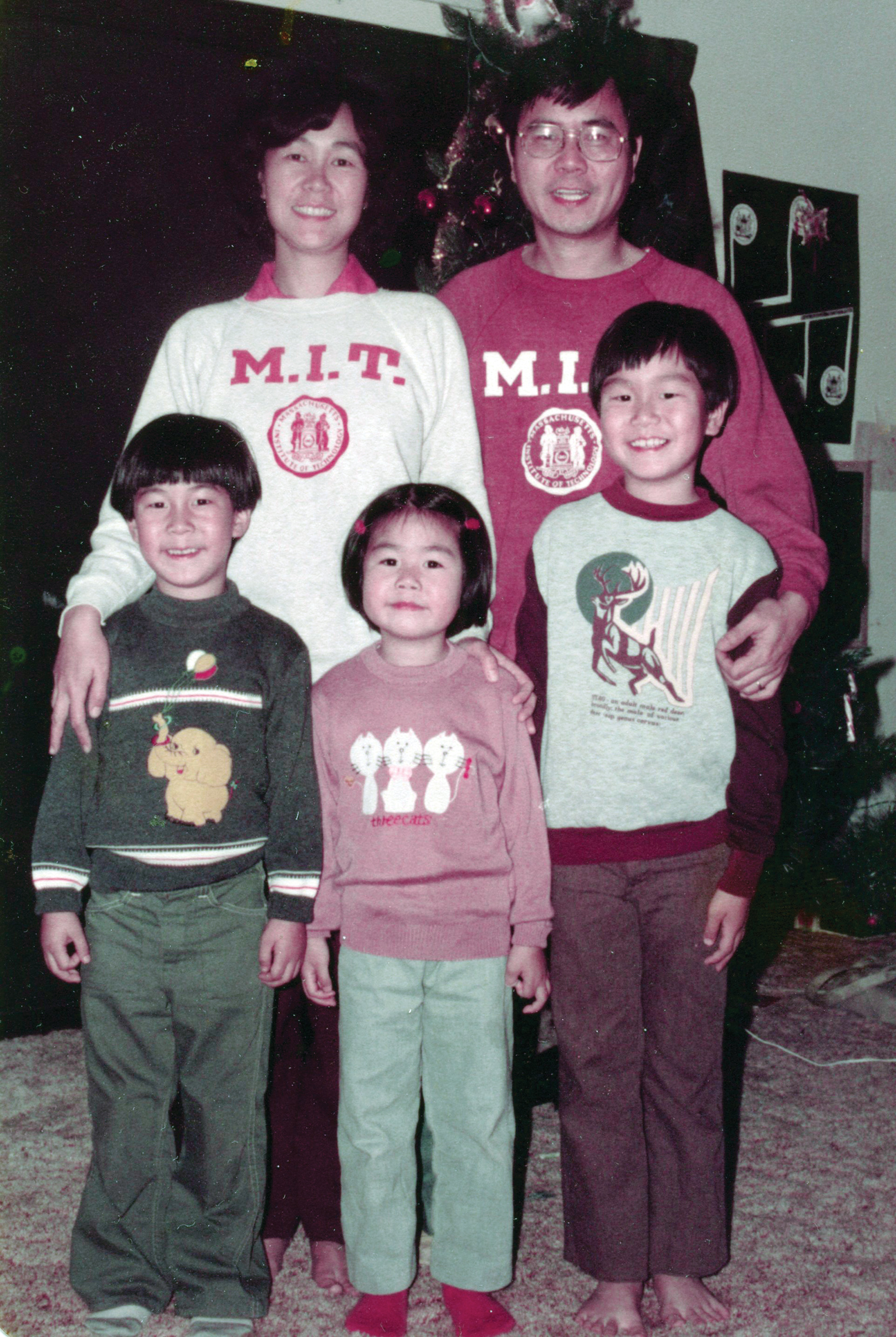
When mechanical engineering professor Evelyn Wang ’00 was growing up in Santa Monica, California, her passion was music, not science. In high school, she attended a specialized music program every day after school. She studied piano, violin, and opera and traveled internationally with an orchestra. Both of her parents had received PhDs at MIT, and her older brothers excelled at science. “Being the youngest, I always wanted to figure out a way to distinguish myself from my brothers,” says Wang, 36, who is known for her ground-breaking work on nano-engineered materials and heat transfer and recently received tenure. “But it’s funny—as you get older, you realize you can’t avoid the family influence.”
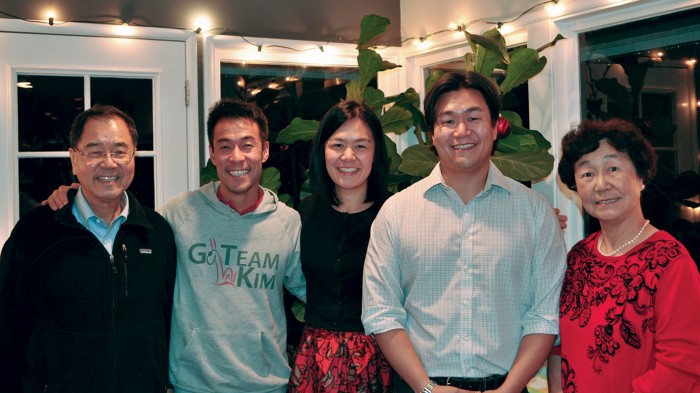
Wang’s parents met at MIT in the 1960s, when both were graduate students from Taiwan. Shen-Wei Chien, PhD ’68, who arrived in 1964 and now goes by the name Edith Wang, studied peptide synthesis. “I had no problem with the chemistry,” she says. But speaking English, as opposed to simply reading it, was a struggle. “My roommate helped me so much when I had to give a presentation,” she recalls. Kang Wang, SM ’66, PhD ’70, who came in 1965 after a year of military service, did electrical engineering. “We used to work till one or two o’clock in the morning, then drive to Chinatown,” Edith says. They’d eat at a restaurant that offered dinner for 99 cents. “Then the next day, we were back to the lab. It was one of the happiest times of my life.”
In 1967, at 24, she completed her PhD in organic chemistry. “I had to wait for him to catch up,” she says of Kang, who was still working on his degree. So she took a position at Harvard with the renowned organic chemist Robert Woodward, studying an organic molecule called sapphyrin, which they isolated while working on vitamin B12. “I was the only girl in a huge group of postdocs, and I was very successful,” she says.
In 1968, Edith and Kang were married in the MIT chapel. The chaplain “didn’t mind that we are both atheists,” she says. They held their wedding reception at the student center next door, ordering in dim sum. “We were students, we didn’t have much money, and all our friends were at MIT,” she explains. Upon getting his doctorate in 1970, Kang became an assistant professor at MIT, and in 1972 he took a position at the General Electric research center in Schenectady, New York. (Edith’s two brothers also received PhDs from the Institute, in 1968 and 1973.)
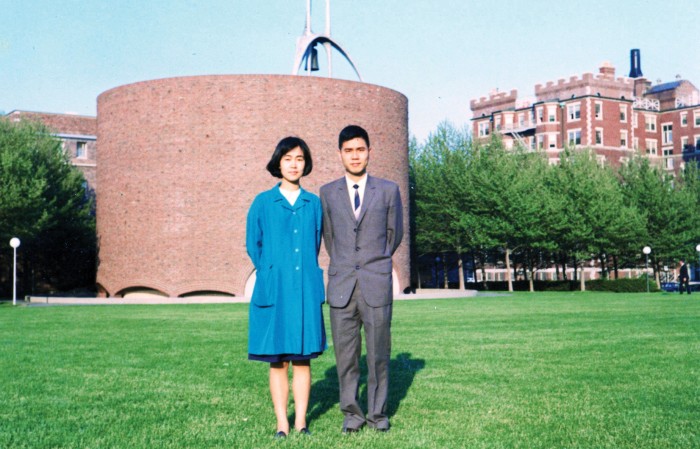
While in upstate New York, Edith and Kang had three children: Alexander, Benjamin, and Evelyn. “They’re all GE babies,” says Edith, who worked part time, teaching organic chemistry at Union College and then at Rensselaer Polytechnic Institute. After Kang was asked to join the electrical engineering faculty at the University of California, Los Angeles, in 1979, the family moved to California. For two years Edith worked for the German company Henkel, conducting research on surfactants. Eventually, though, she decided to stay home with her children. It was a “very hard decision,” she says. But at the time there were few resources for working mothers: “they didn’t even have a school bus to take the children to school.” She also wanted to make sure that “each child got the time they deserved.”
Throughout Evelyn’s childhood, science and engineering remained central to family life and lore. “My father would take us on tours of his lab” at UCLA, Evelyn recalls. “I remember it being loud and cluttered, with vacuum chambers and metallic equipment, and students working hard making measurements.” The family also traveled widely, accompanying Kang when he lectured at other universities. “As kids, we didn’t necessarily absorb all the technical information,” she says, “but we got a feel for what university research is in different places.”
Evelyn’s older brothers embraced science with apparent ease. She, too, had a facility for the subject, but her main focus remained piano and violin. “I was the musical one,” she says. “I was also extremely shy, and music allowed me to socialize with people who shared my interests and express myself without using words.”
Still, by the end of high school, Evelyn knew that while she loved music, she wasn’t going to become a professional musician. “I was a little burnt out on music, actually, and wanted to do something else,” she says. MIT provided the chance.
Evelyn and Ben frequently “nerd out” and discuss technical problems related to their work.
“Growing up, all we heard about was MIT and what a source of great opportunity it was for our parents as immigrants,” says Ben, who received a PhD in chemical engineering from the Institute in 2007. When Evelyn matriculated in the fall of 1996, her other brother, Alexander, had just earned his bachelor’s degree and was still at MIT, working on a master’s in electrical engineering and computer science. “Everyone was very protective of me,” she recalls, and her family worried about her moving to the East Coast. “But I had a lot of support, even though I was far from home.”
Living in Burton Conner, she quickly developed a close-knit group of friends. “I had warnings from my brother that MIT is a hard place, that you really have to focus,” she says. “I knew one model for success is to find groups to work with, to conquer whatever the problem set is and study for the exams.” Ultimately, she decided to major in mechanical engineering, a field that, coincidentally, many of her dorm-mates were also planning to pursue. She associated it with art and design: “I thought it would be a good fit for me, and it was different from my brothers.” Much as music allowed her to share an intense common interest with peers, working on engineering was “so fulfilling socially as well as academically,” she says.

As a doctoral candidate at Stanford University, Evelyn homed in on small-scale phenomena and explored how to dissipate excess heat from microprocessors, a significant concern for industry. After receiving her PhD in 2006, she went to Bell Labs, where she began to design surfaces with nanoscale structuring that would allow precise manipulation of droplets. While she was at Bell Labs, she received an offer from MIT, and in 2007 she returned to the Institute as an assistant professor.
Today, Wang oversees a large laboratory bustling with students and postdocs, working mainly on projects related to nanoengineering and heat transfer. In one room, she points out a small tube of oxidized copper. To the naked eye, it could be mistaken for a piece of laboratory debris. Seen under a scanning electron microscope, however, the outside of the tube is covered in small, irregular spikes, which are coated with a silicon-based compound known as a silane that makes them superhydrophobic, or extremely water-repellent. Wang has also worked with silicon surfaces, which she bombards with ions in order to create micro- and nanoscale features.
In both cases, Wang’s goal is to use surfaces to control the behavior of fluids, in part to dissipate or transport heat. In heat exchangers at power plants, for instance, superhydrophobic surfaces can allow for “different modes of condensation,” she says. Instead of letting a watery film form, as it might on a glass window, superhydrophobic surfaces cause the drops to roll off quickly, transferring heat more efficiently and potentially enhancing the performance of the system. (Her control of fluid behavior on surfaces is so precise that in another project, she has managed to shape water droplets into hexagons, squares, and dodecagons. These techniques could prove useful in applications like DNA microarrays.)
Another central area for Wang is solar thermal engineering. She is working on thermal photovoltaic systems, which capture heat from the sun and convert it to electricity; in theory, at least, these systems have the potential to generate electricity much more efficiently than traditional solar panels do.
Using metallic photonic crystals designed at the Institute by her collaborator Marin Soljacic ’96, Wang has helped create an innovative thermal photovoltaic system. The system is designed to absorb as much of the solar spectrum as possible, and to minimize the reëmission of infrared radiation, which would result in the loss of energy. The system then transfers the thermal energy it has absorbed and reëmits it at particular wavelengths that allow the photovoltaic component of the system to generate electricity as efficiently as possible.
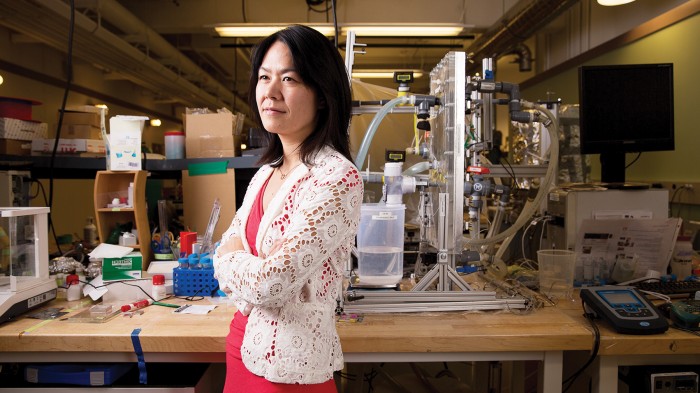
“It’s both scientifically very solid and engineered in a way to give it the possibility of working in practice,” says Paul Braun, a materials scientist at the University of Illinois at Urbana-Champaign.
Most recently, Wang has also begun work on thermal batteries, which might be used to heat or cool the interiors of electric cars. “We call it a thermal battery because it offers thermal storage, analogous to an electrical battery for electrical storage,” she explains.
In the lab, she and her team have created two stacks of roughly 100 small tiles made of zeolite. The zeolite adsorbs water vapor, and this process releases heat. (The battery is also able to provide cooling through evaporation.) Her group has been at work on the project for three years and has produced a prototype. “With this storage capability, we can provide heating and cooling to the passenger cabin without draining the electric battery,” says Wang. So adding thermal batteries to electric cars could help extend their driving range.
Wang, who is on sabbatical this year, is spending much of her time in California, working part time at Google. Though she remains close-lipped about the details, she says that the project involves the study of heart failure and is a new area of inquiry for her.
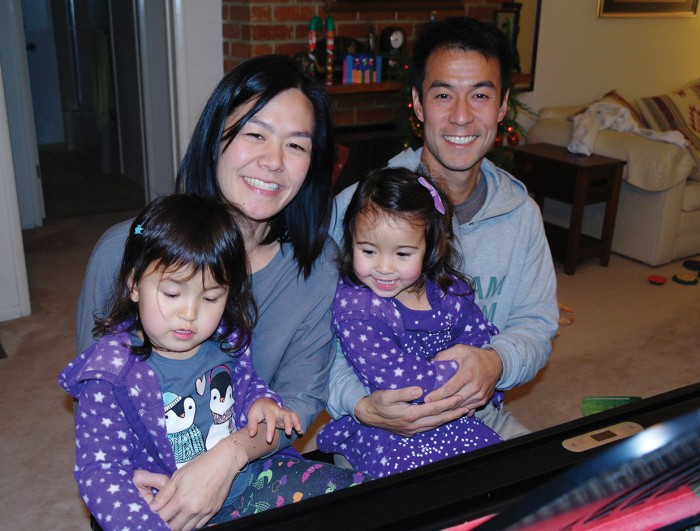
She is also spending time with family while on the West Coast. Her father, still a professor at UCLA, says that contrary to what one might expect, he and his daughter don’t talk much about their research; he has always wanted her to have “her own creative domain.” Evelyn’s brother Alexander now works for the software company VMWare in California and focuses more on the intersection of technology and business. While he and she talk shop to some extent, Evelyn and her brother Ben frequently “nerd out,” she says, discussing technical problems related to their work and appreciating each other’s expertise. (Svaya Nanotechnologies, the company that Ben cofounded in 2008 to develop efficient nano-based thin-film manufacturing processes, was just acquired by a Fortune 500 company.)
Recently, Ben and Evelyn also took his three-year-old twins to their first music lessons at a local school. “It brought back so many memories,” Evelyn says. “I can see how much they love it. But it also takes a lot of effort to be able to play—a lot of practice.”
“You don’t learn discipline from nothing,” she adds. “I learned it from music, and I want to pass that on.”
Keep Reading
Most Popular
Large language models can do jaw-dropping things. But nobody knows exactly why.
And that's a problem. Figuring it out is one of the biggest scientific puzzles of our time and a crucial step towards controlling more powerful future models.
How scientists traced a mysterious covid case back to six toilets
When wastewater surveillance turns into a hunt for a single infected individual, the ethics get tricky.
The problem with plug-in hybrids? Their drivers.
Plug-in hybrids are often sold as a transition to EVs, but new data from Europe shows we’re still underestimating the emissions they produce.
Stay connected
Get the latest updates from
MIT Technology Review
Discover special offers, top stories, upcoming events, and more.